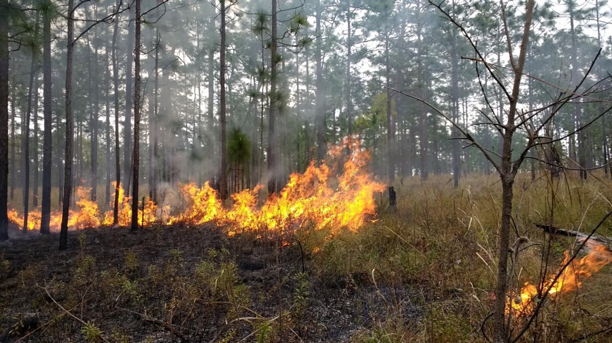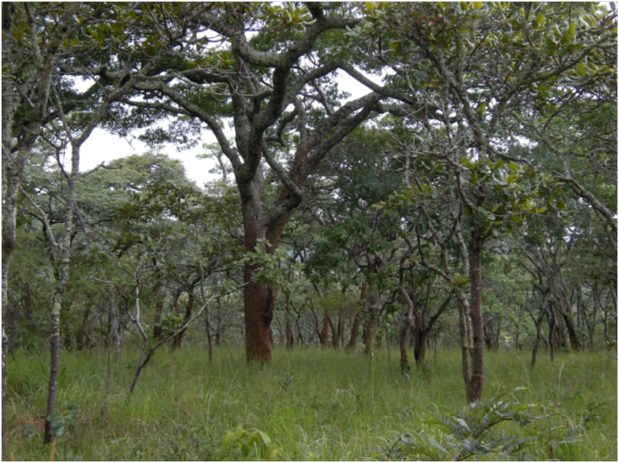Module 5: Plant and Forest Ecosystem Water, Carbon, and Nutrient Relations
Topic 5.4: Fire
Fires in tropical forests range from being destructive to communities not adapted to burning, to necessary for the maintenance of species and ecological processes. Given climate change as well as increases in forest fragmentation and human population densities, fire regimes are changing. In this sense the word “regime” refers to the fire return interval (i.e., time elapsed between fires), fire intensity, and fire effects.
Fire-maintained tropical forests and woodlands (i.e., open-canopied forests often with grassy understories) depend on the regular occurrence of fire to maintain their structure and composition. Many trees in these communities are little affected by fire because they produce thick bark, which insulates their vascular cambia from heat damage. Many species of trees and other plants in these communities that are susceptible to fire damage have the capacity to resprout from underground buds. Finally, some plant species in fire-maintained communities produce seeds that are only released from fruits after fires (i.e., serotinous fruits) or have seeds with fire-triggered germination.
The fires that burn into forests with fire return intervals measured in centuries are typically of low intensity and creep slowly through the forest understory consuming flammable litter, but can nonetheless be extremely destructive. Due to their thin bark, small trees are especially susceptible to these low intensity fires, but even large trees are often killed outright, or suffer basal damage that renders they susceptible to fungal and insect attack. These trees are susceptible to wind damage, and if fires recur, they are likely to be killed.
Given the wide range of fire regimes in the tropics, fire management ranges from intentionally setting controlled burns to mimic the effects of wildfires to active suppression efforts (Figure 5.4.1). Particularly where humans use fire to clear agricultural fields adjacent to forests, fire frequencies typically increase and fire control efforts need to be enhanced. Convincing farmers to be more careful with their fires or prohibiting the use of fire altogether are both challenging endeavors, but have been effective in many areas in the tropics. Where fire suppression is needed, stopping the spread of fires moving through forests is made challenging by difficult access, lack of trained personnel, and lack of equipment.


Figure 5.4.1. A controlled burn in a fire-maintained pine (Pinus palustris) savanna in Florida and a fire-maintained miombo woodland dominated by Brachystegia spp. in Zambia.
